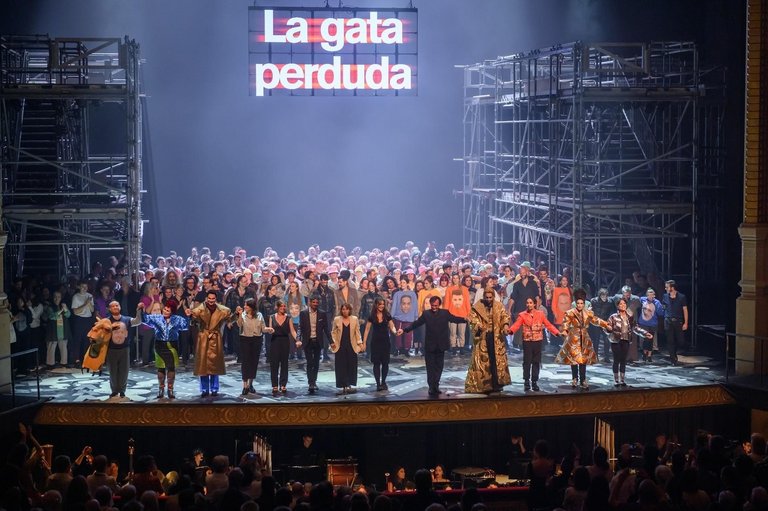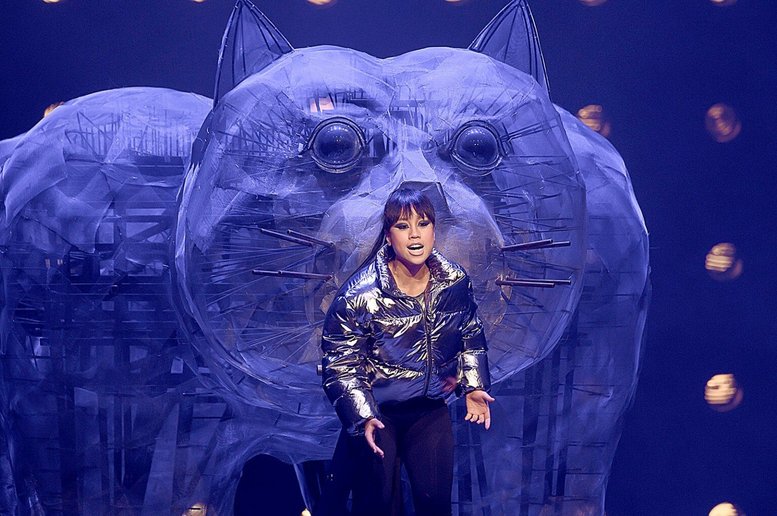October 2022: an unusual opera premiered at Barcelona’s Gran Teatre del Liceu. La Gata Perduda (The Lost Cat) was a large-scale community opera production, co-created by over 200 residents of the city’s working-class Raval district. The opera won the prestigious Max Award for best new production, Spain’s highest recognition in the performing arts, comparable to the Tony Awards in the US.
The TRACTION story: EU-funded research that makes a difference
In the EU-funded TRACTION project, opera became a platform for inclusion. With digital tools built by CWI, a whole neighbourhood in Barcelona co-created and performed their own stories. The project has been selected among 40 landmark EU research initiatives, to illustrate the breadth of research and innovation made possible through EU funding.

The performers, many of them migrants, rehearsed and shared ideas for months using a web-based platform developed in Amsterdam by researchers at CWI. This unlikely fusion of opera, technology and social justice was the culmination of the TRACTION project, a three-year EU Horizon 2020 project that reimagined opera as a collaborative art form for everyone, including rural communities, young people in detention, and communities often excluded from traditional cultural institutions.
Cultural democracy
TRACTION didn’t only aim to make opera more accessible. It proposed something more radical: cultural democracy. That meant shifting from performing to communities to creating with them, supporting people to shape their own narratives, musical language, and public presence.
La Gata Perduda premiered to a sold-out Liceu theatre, telling the story of a stolen cat statue, but symbolizing much more: a diverse community resisting erasure and reclaiming its own voice.
Selected EU project
TRACTION was selected as one of just 40 projects featured in the EU’s 40 stories, 40 years – EU research & innovation, marking the 40th anniversary of European research funding. It stood out among tens of thousands of EU-funded projects.
European Commission, ‘40 stories, 40 years’, 2024
Opera has always spoken to both elites and people, expressed both authority and revolution. But in recent decades, this art has too often lost sight of its popular roots and radical edge. Researchers sought to put opera back at the heart of living culture [..]
The technology behind inclusion
At the core of the project was the Co-creation Space (CCS), an online platform developed by CWI’s Distributed and Interactive Systems (DIS) group. Designed as a kind of private social network for collaborative creativity, the tool allowed participants to upload rehearsal materials, comment on each other’s work, share encouragement, and build performances together.
The tool was piloted extensively with amateur choirs preparing La Gata Perduda, and used in rural Ireland to co-create new music with young people using household objects as instruments.
The platform is part of a broader effort to design intelligent systems that centre on human experience. The challenge was to support creative collaboration across divides of language, education, and digital literacy, while keeping the process meaningful and safe. (Below is a short video on the Co-creation Space. Scroll down to continue reading)
User-centred, artist-driven
From the start, CWI’s Distributed and Interactive Systems (DIS) group used participatory design methods: focus groups with trial partners, co-design sessions with users, iterative interface testing. Participants asked for features like visual privacy controls, simplified media editing, and the ability to save drafts or filter group content. These needs were integrated throughout development.
The tool evolved over time, from a space for uploading and annotating sound recordings in Ireland, to a full-fledged production and rehearsal tool in Barcelona. Participants in La Gata Perduda used the CCS not only to learn music and choreography, but to establish trust across choirs and reflect on their creative journey.
Art, research, and recognition
TRACTION’s outcomes went far beyond the stage. The project released multiple open-source tools, published policy guidelines on artistic co-creation, and developed new methods for evaluating how technology can foster cultural inclusion. The CCS software and its supporting research remain available to new initiatives across Europe.
For CWI, the project was a case study in how fundamental research in human-centred systems can enable real-world impact, not by simplifying complexity, but by designing for it. As societies grapple with digital divides and growing inequality, the lessons of TRACTION resonate far beyond the opera house.
By placing opera back into the hands of people too often left outside cultural institutions, and by giving them the digital means to express themselves collectively, TRACTION showed how technology, when carefully and collaboratively designed, can help build a more inclusive Europe.

More information
- DIS starts two projects on digital humanities: TRACTION and Mediascape (2020)
- DIS group pilots the co-creation space for digital humanities together with the Liceu opera in Barcelona (2020)
- DIS group develops co-creation space for digital humanities (2021)
- DIS group supports community opera that premiered in Barcelona (2022)
- DIS group releases open source software for digital humanities (2023)
- Max Award for community opera “La Gata Perduda” (2023)
More information on TRACTION
